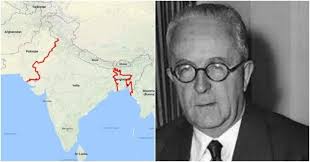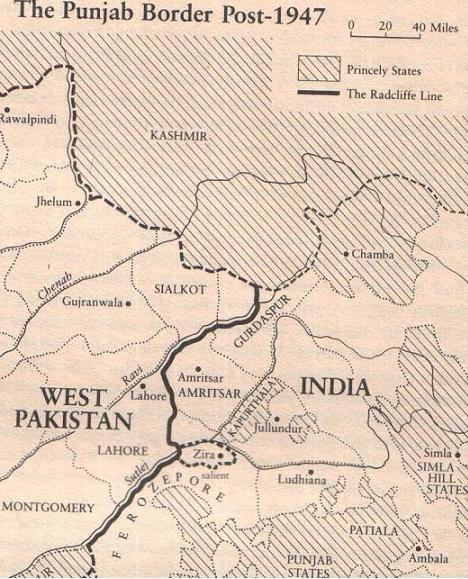In Part I and Part II of the story of Kashmir, you were introduced to the situation in the kingdom of Kashmir in 1947 and the key players.
As mentioned in Part I of this series, nearly 2/5th of Indian territory was ruled by princely states who were given a choice to join either India or Pakistan on 15th August 1947. They could also opt to remain free. There were nearly 565 such states spread across the subcontinent ranging from small holdings to kingdoms larger and richer than many European nations.
On 15 August 1947, the stellar team of Sardar Patel and VP Menon who were at the helm of the States Department, had, in less than 2 months, managed to gain the accession of rulers of 562 of the 565 odd states. This in itself was a monumental task, unparalleled in history.
Only 3 states remained on the fence.
- Jammu and Kashmir
- Hyderabad (Andhra and Telengana today)
- Junagarh (in Gujarat)
Mirror States
The situation of these states was in a way, a mirror image of the other.
Jammu & Kashmir had a Muslim majority population with a Hindu ruler.
Hyderabad and Junagarh had a Hindu majority population with a Muslim ruler.

With the lapse of British paramountcy (that is the end of the agreement between the rulers and the British Crown), the decision to join either the dominion of India or Pakistan rested with the ruler.
While Maharaja Hari Singh wanted for his state to remain free, he also wanted to buy time to read the situation better. The Nizam of Hyderabad, said to be the richest man in the world, also dreamed of turning his state into an independent nation. Junagarh was too small for such lofty dreams but the Nawab of Junagarh did not make his stand clear till the very end.
On 16 August 1947, Congress leaders in Delhi found out from a newspaper announcement that Junagarh had acceded to Pakistan. The news was a big blow, as Junagarh was located within the Kathiawar region of Gujarat and had no land access to Pakistan. In other words, a part of Pakistan was now within India.
Jinnah who had encouraged the Nawab of Junagarh, was also making overtures to the Nizam of Hyderabad and if Hyderabad too went Junagarh’s way, India would have had pockets of Pakistan in her belly.

Not many people know that in both cases the Indian government was compelled to make use of force in order to bring about the accession of both these kingdoms to India. A referendum was held in Junagarh, where an overwhelming majority voted for India. Pakistan still however claims Junagadh as a part of its own territory. In the case of Hyderabad, the Indian army invaded the state and took over power from the Nizam.
The situation in Kashmir needs to be understood in light of these events as they form part of the larger picture and prevailing conditions at that time.
As the key players watched these events unfold, sometimes helplessly, another key event had a big role to play.
India Pakistan Boundary
Once it had been decided to partition the country, two Boundary Commissions had been set up to demarcate the exact boundary lines in Punjab and Bengal.
Sir Cyril Radcliffe, a man who had never visited India and who knew absolutely nothing about it, was the Chairman of the Commission.

The reference to the Boundary Commission was made as follows…
“The Boundary Commission is instructed to demarcate the boundaries of the two parts of the Punjab on the basis of ascertaining the contiguous majority areas of Muslims and non-Muslims. In doing so it will also take into account other factors.”
Gurdaspur district in Punjab had a slight Muslim majority and everybody expected it to be awarded to Pakistan. Had Gurdaspur been awarded to Pakistan, it would have completely cut off Jammu and Kashmir from the rest of India, as it was only through Gurdaspur that India had land access to Kashmir. Strangely enough, when the Radcliff Award was announced, Gurdaspur went to India.
This not only made accession of Jammu and Kashmir to India a real possibility, but it also infuriated the Pakistanis. Many felt betrayed by the Radcliffe award and felt that it had been tampered with by Viceroy Mountbatten under pressure from Nehru. Further they felt that under the two-nation theory, Kashmir being a Muslim majority state, ought to go to Pakistan.

At the same time trouble was brewing in a small area of Jammu named Poonch where people opposing the Maharaja had set up a parallel government and called themselves Azad Kashmir. On 14th August 1947, they hoisted the flag of Pakistan. This infuriated Maharaja Hari Singh who instructed his government to come down heavily upon the rebellion in Poonch.
Pulling in Opposite Directions
On his part, Maharaja Hari Singh – as a Dogra Rajput and a Hindu, did not wish to join Pakistan that had been founded as a nation for Muslims. Sheikh Abdullah (Click here for more about him) a popular leader of the state also held the same view. In this, the two rivals were on the same page.
Pakistan in its part was getting news from Poonch that the Maharaja’s forces were massacring Muslims there. Further, its leaders were already incensed by the Radcliffe Award and wanted to make amends to take control of Muslim majority areas. Refugees were coming in daily into Lahore and other parts of Pakistan with news of massacres and brutalities across the border.
In the case of India, Nehru had a personal interest in Kashmir, which he declared openly. He wished for the state to accede to India and relied upon his personal friendship with Sheikh Abdullah to make it work. Further to act as a counterbalance in dealing with Hyderabad and Junagadh, it was necessary for India to hold on to Kashmir.
The cauldron was on fire with the lid threatening to blow off. The situation appeared to be spiraling into an all-out conflict.
As it turned out, that is exactly what happened next.
Sign up to the Site to stay posted for more!
565
The Dramatic Story of India’s Unification
My Book with Hachette Publishing House, will be narrating for the first time, the saga of Accession by Princely States, for Children. Including the Story of Kashmir.
For Updates on the Book Release, Stay Connected.
